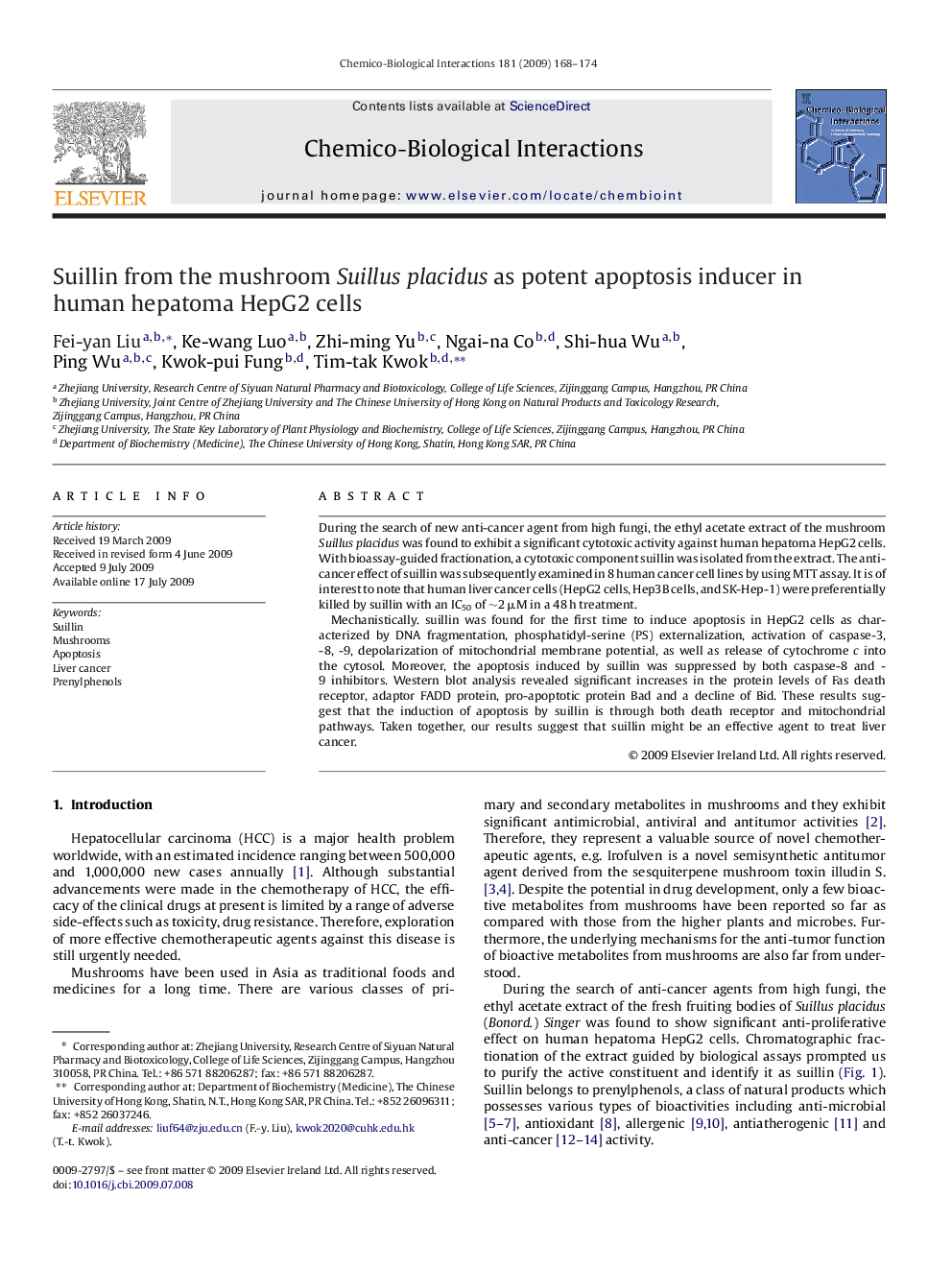| Article ID | Journal | Published Year | Pages | File Type |
|---|---|---|---|---|
| 2581282 | Chemico-Biological Interactions | 2009 | 7 Pages |
Abstract
Mechanistically. suillin was found for the first time to induce apoptosis in HepG2 cells as characterized by DNA fragmentation, phosphatidyl-serine (PS) externalization, activation of caspase-3, -8, -9, depolarization of mitochondrial membrane potential, as well as release of cytochrome c into the cytosol. Moreover, the apoptosis induced by suillin was suppressed by both caspase-8 and -9 inhibitors. Western blot analysis revealed significant increases in the protein levels of Fas death receptor, adaptor FADD protein, pro-apoptotic protein Bad and a decline of Bid. These results suggest that the induction of apoptosis by suillin is through both death receptor and mitochondrial pathways. Taken together, our results suggest that suillin might be an effective agent to treat liver cancer.
Keywords
Related Topics
Life Sciences
Environmental Science
Health, Toxicology and Mutagenesis
Authors
Fei-yan Liu, Ke-wang Luo, Zhi-ming Yu, Ngai-na Co, Shi-hua Wu, Ping Wu, Kwok-pui Fung, Tim-tak Kwok,
